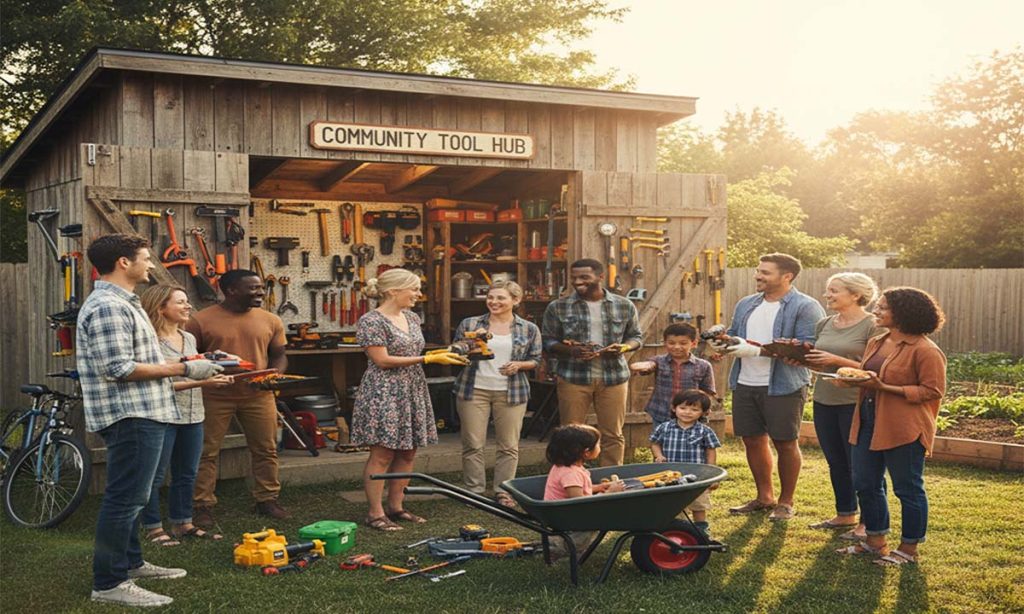Creating a community library or reading room is a fantastic way to foster a love of reading, provide educational resources, and build a sense of community. Whether you’re starting from scratch or revitalizing an existing space, here’s a step-by-step guide to help you establish a welcoming and functional community library or reading room:
1. Define Your Vision and Goals
Establish Objectives: Determine what you want to achieve with your community library or reading room. Objectives may include promoting literacy, providing a quiet study space, or offering a venue for community events and educational programs such as STEM workshops for kids and adult education programs.
Identify Target Audience: Consider the needs and preferences of your community. Are you targeting families, children, students, or adults? Tailoring your library’s offerings to your audience will help ensure its success.
2. Plan the Space
Choose a Location: Select a convenient and accessible location for your library or reading room. This could be a dedicated building, a section within a community center, or a repurposed space in an existing facility.
Design the Layout: Design a layout that accommodates reading areas, shelving for books, and additional features like computers, study rooms, or event spaces. Ensure that the space is inviting and conducive to reading and learning.
Consider Accessibility: Make sure your library is accessible to people with disabilities. This includes providing ramps, wide doorways, and adaptive furniture if necessary.
3. Gather Resources
Acquire Books and Materials: Start building your collection with a diverse range of books and reading materials. Consider including fiction, non-fiction, reference books, and materials for different age groups and interests. Donations from local residents or organizations can be a valuable resource.
Provide Technology: Equip your library with computers, e-readers, and internet access if possible. Digital resources, such as e-books and online databases, can complement your physical collection.
Stock Supplies: Ensure you have essential supplies such as library cards, check-out systems, cataloging tools, and stationery.
4. Establish Policies and Procedures
Create Library Policies: Develop policies for borrowing books, handling late returns, and maintaining the collection. Clearly communicate these policies to users to ensure smooth operations.
Set Up a Catalog System: Implement a cataloging system to organize your books and materials. This can be a manual card catalog or an automated system using library management software.
Plan for Staffing: Determine if you need paid staff, volunteers, or a combination of both. Clearly define roles and responsibilities, including managing collections, assisting patrons, and organizing events.
5. Promote Your Library
Host Opening Events: Organize a launch event to introduce your community library to the public. This could include book readings, tours, and activities to attract visitors and generate interest.
Utilize Social Media: Create social media profiles for your library to engage with the community, share updates, and promote events. A strong online presence can help attract and retain patrons.
Collaborate with Local Organizations: Partner with schools, community groups, and local businesses to promote your library and its programs. Collaborative events and cross-promotion can help increase visibility and support.
6. Offer Programs and Events
Organize Reading Programs: Implement reading programs for different age groups, such as storytime for children, book clubs for adults, and summer reading challenges.
Host Educational Workshops: Offer workshops and classes on various topics, such as writing, research skills, or digital literacy. These programs can attract new patrons and provide valuable learning opportunities.
Plan Community Events: Create a calendar of events that includes author talks, book signings, and cultural events. Hosting diverse activities will keep your library dynamic and engaging.
7. Evaluate and Improve
Gather Feedback: Regularly seek feedback from library users to understand their needs and preferences. Surveys, suggestion boxes, and informal conversations can provide valuable insights.
Monitor Usage: Track library usage, including book check-outs, event attendance, and user demographics. Analyzing this data will help you assess the effectiveness of your programs and make informed decisions.
Make Adjustments: Continuously evaluate your library’s operations and make improvements based on feedback and usage data. Adapt to changing community needs and trends to keep your library relevant and effective.
Conclusion
Creating a community library or reading room involves careful planning, resource acquisition, and ongoing management. By focusing on your community’s needs, providing a welcoming space, and offering engaging programs, you can establish a valuable resource that enhances literacy, education, and community cohesion.






